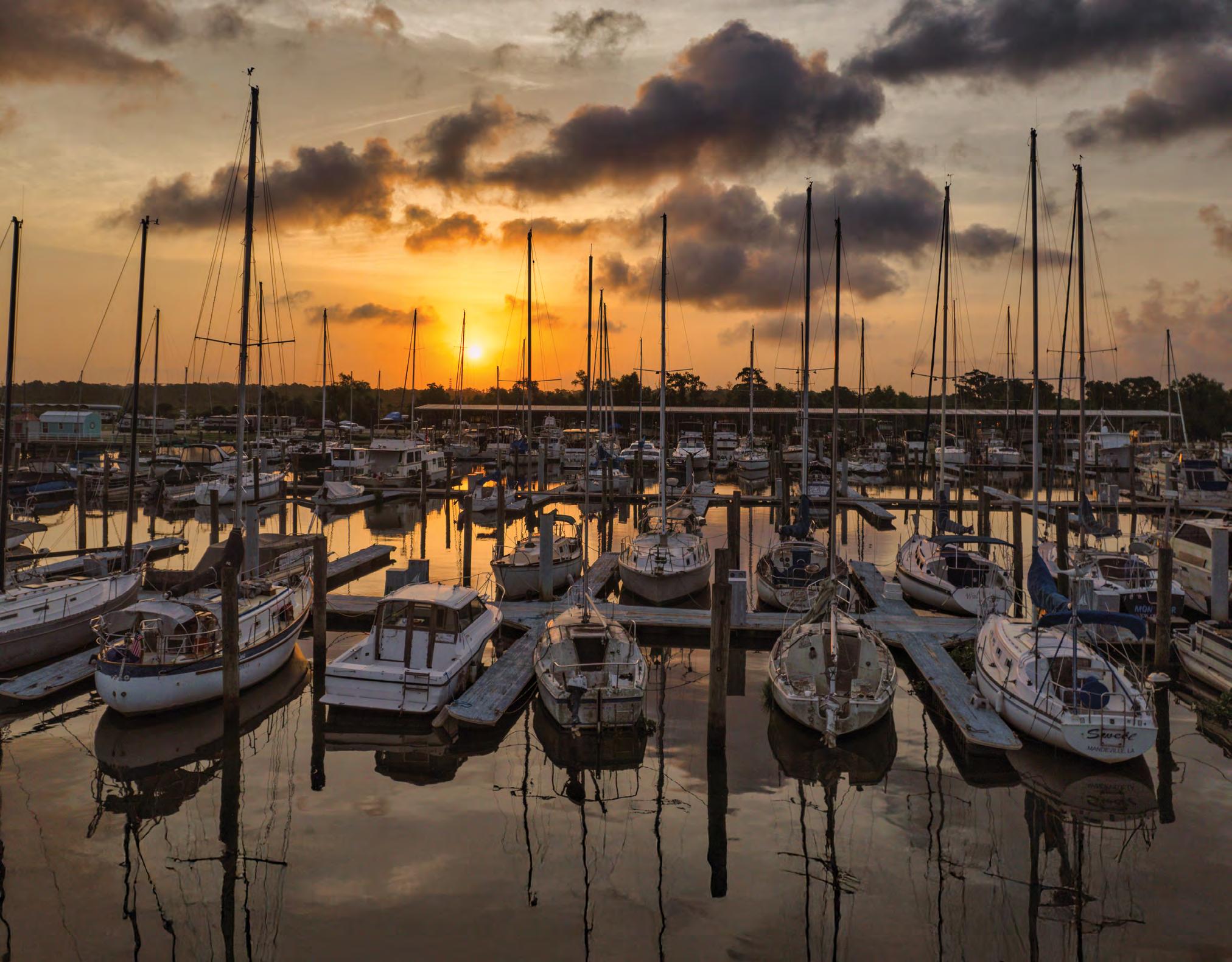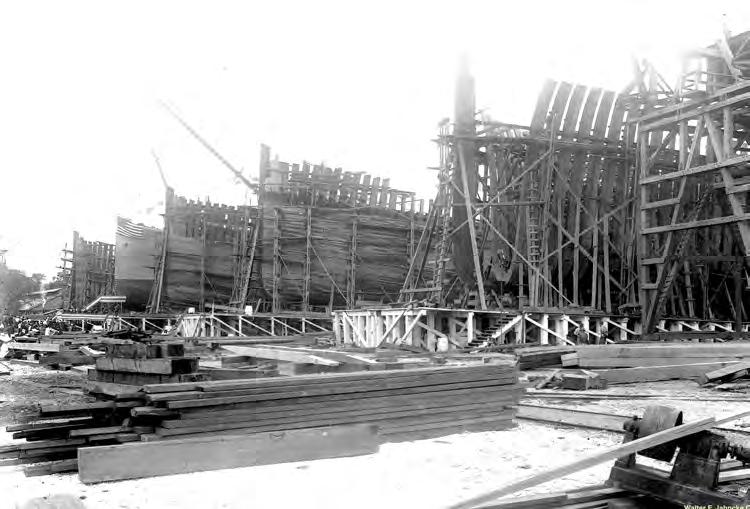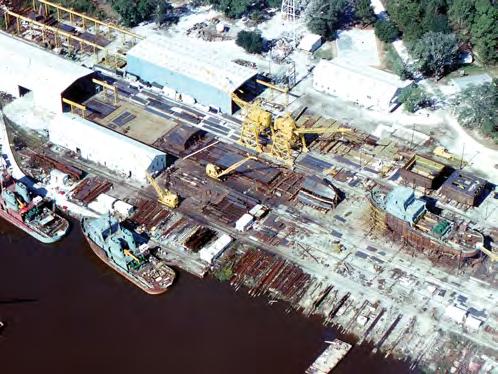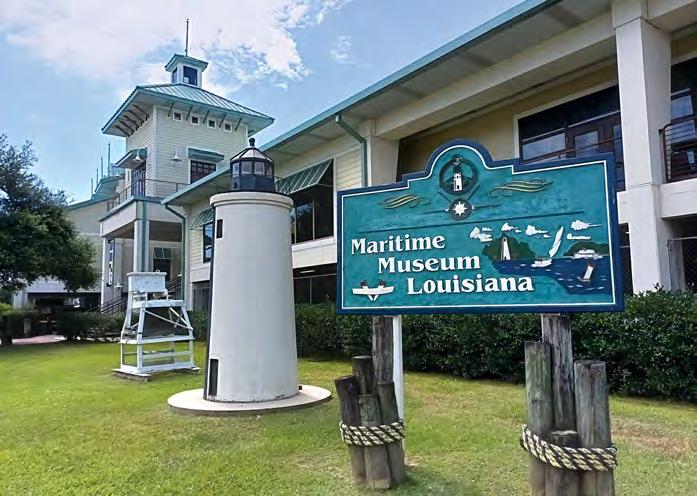
5 minute read
Maritime Legacy
Honoring the Past and Enjoying the Present.
BY RON BARTHET
Widely recognized for its many modern marinas, which provide safe harbor for thousands of recreational boats, The Northshore also enjoys a rich history of little-known maritime milestones. The lake and rivers once teemed with cargo schooners and passenger steamships, and over the years, several shipyards produced hundreds of large vessels for World War I and II, as well as the worldwide petroleum industry.
Early Native Americans glided along the waterways in their dugout canoes, and even went out into the lake to their village on an island in the middle of Lake Pontchartrain more than 500 years ago.
Day sailors cruise the lake daily, carrying on a tradition that began centuries ago. Paintings from the 1800s often include sailing boats gliding across the lake. The Mandeville yacht club was established as early as 1893, and yacht club regattas frequently traverse the lake today.
The Northshore even earned a spot in nautical history when James Rumsey, the inventor of the steamboat, lived on Bayou Rouville in Lacombe beginning in 1774. Working in secret, he used the newly invented steam engine to design a craft that could move forward against the current. His work continued, first on Pearl River Island just east of the Rigolets and then in Baltimore, Maryland. In 1787, in the Potomac River at Shepherdstown, WV, he amazed onlookers with this steam-powered watercraft. He later served as George Washington’s chief engineer.

Horace Lawson Hunley is widely acknowledged as the developer of submarine technology and "the father of submarine warfare." In the mid-1800s, he owned a plantation in Covington and designed three submarines. The first one, built at a foundry in New Orleans, was called the “Pioneer.” After being tested in the lake, it was reportedly scuttled in the Tchefuncte River near Madisonville to keep it out of Yankee hands.
The third submarine built from his designs is credited with the first sinking of an enemy vessel in times of war which took place in Charleston Harbor, South Carolina.
Meanwhile, back in Lake Pontchartrain, as New Orleans' trade activity increased, an ever-growing amount of goods and produce came from The Northshore. This was made possible by dozens of cargo schooners crisscrossing the lake. Demand was so high that between 1842 and 1887, more than 58 sailing vessels were built on The Northshore. The same schooners helped many people escape to The Northshore when outbreaks of yellow fever descended upon the Crescent City.
Southbound trade became so prolific on the lake and through the Rigolets that a number of pirates flourished as well. They would confront vessels laden with items bound for New Orleans, steal their booty and then go hide out in Honey Island Swamp. Thousands of dollars’ worth of gold coins, dated 1827, were found buried in that swamp in 1907. Today, the Honey Island Swamp is a treasure for hunters and fishermen as well as wildlife enthusiasts who delight in the daily cruises that tour the swamp.

When passenger steamboats made the scene in the late 19th century, they offered daily trips to The Northshore for heat-weary New Orleans residents. Thousands of people enjoyed weekend excursion voyages on these boats, and beginning in the 1920s, the vessels could even accommodate vehicles. Thus the New Orleans workday commute was born. Commuters switched over to the world’s longest bridge over water, the Lake Pontchartrain Causeway, in 1956.
In the early 1900s, New Orleans musicians would voyage to Mandeville, then make the circuit of several music halls across The Northshore to play for dances and parties. The Northshore’s rich musical heritage continues today with riverside concerts in Covington, lakefront symphonic performances and the jazz sessions at the Dew Drop Jazz Hall in Mandeville.
Area shipyards began with a U.S. Navy shipyard built in the early 1800s on the Tchefuncte River. Since then, The Northshore has hosted several large shipyards producing a variety of tugboats, barges and cargo ships. Multiple thousands of Northshore men and women have contributed to the expansion of the U.S. merchant maritime fleet as well as warships when needed. During the 20th century, shipyards flourished on Bayou Bonfouca in Slidell, Lacombe and Madisonville. Some are still in operation today.
Among the larger operations were Canulette Shipyards, Southern Shipbuilding, Louisiana Shipyard, all of Slidell and Jahncke Shipyards and Equitable Equipment Co., both of Madisonville. The Maritime Museum Louisiana was built in the mid-1990s on the Jahncke worksite. Equitable was the world's largest builder of LASH and SEABEE barges, and the company also built various types of offshore support boats, ocean-going tugs and other vessels for the petroleum industry.
Balehi Marine in Lacombe, founded in 1975, was a small operation, but it produced custom-designed boats in steel, aluminum and fiberglass. Towboats and tugboats were its specialty. It is located alongside today’s highly popular Tammany Trace recreational bike trail.

The Northshore maritime legacy continues today with the Maritime Museum Louisiana, which showcases the area’s many unique contributions to the maritime industry. There, visitors find many informative displays focusing on the history of area lighthouses, steamboats and fishing vessels, as well as a replica of the Pioneer submarine.










